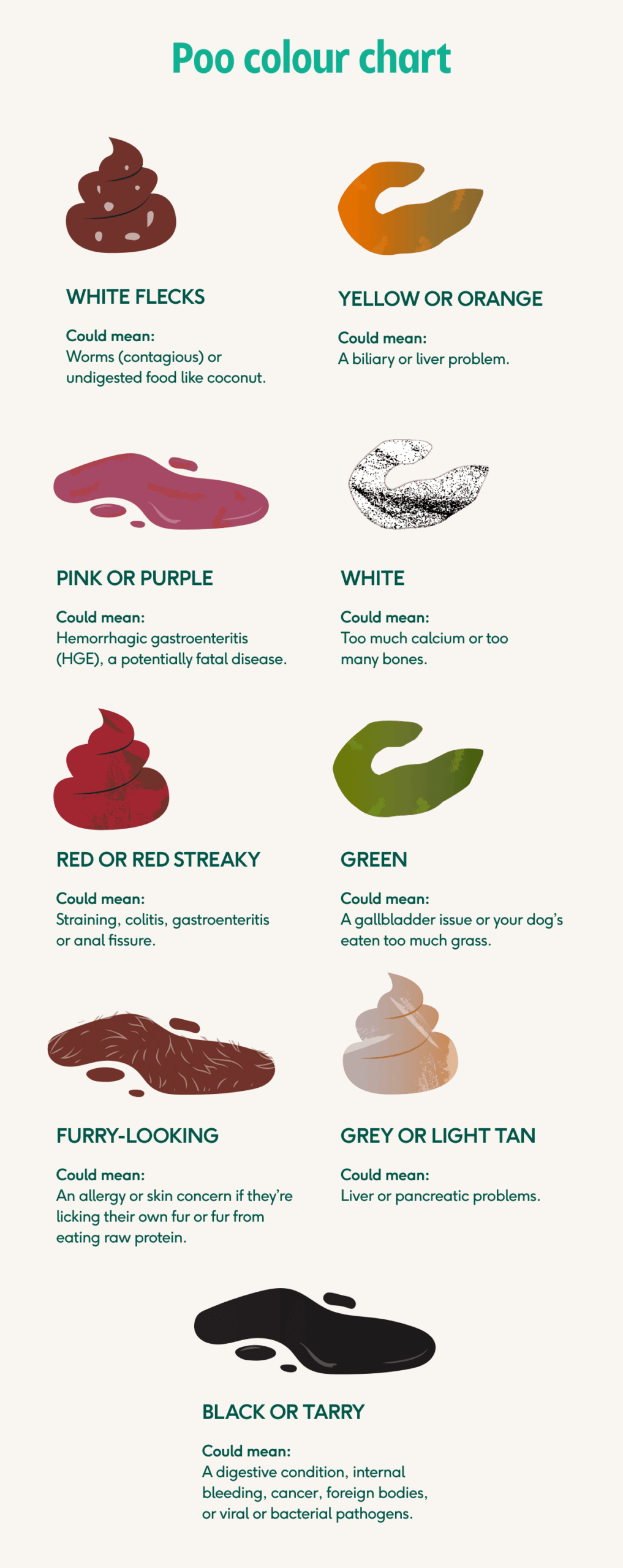Dogs are unable to communicate when they are feeling unwell, which is why it is crucial for pet owners to pay attention to their dog’s poop color as it can be an indicator of their health. Monitoring your dog’s poop color can help you detect any potential health issues early on and seek appropriate treatment.
Changes in your dog’s poop color can be a sign of various health conditions such as dietary issues, infections, parasites, or even more serious illnesses. By regularly checking your dog’s poop color, you can keep track of their overall health and make necessary adjustments to their diet or seek veterinary care if needed.
Dog’s Poop Color Chart
Here is a dog’s poop color chart that can help you identify potential health concerns based on the color of your dog’s stool:
- Brown: A normal and healthy poop color for dogs. It indicates a well-balanced diet and proper digestion.
- Green: Could be a sign of a dietary change, ingesting grass, or a bacterial infection.
- Yellow: May indicate liver or gallbladder issues, or a problem with the pancreas.
- Black: Could be a sign of internal bleeding or gastrointestinal issues. Seek veterinary attention immediately.
- Red: May indicate bleeding in the lower digestive tract. Seek veterinary care as soon as possible.
It’s important to note that occasional changes in poop color may not always be a cause for concern, especially if your dog is otherwise healthy and not displaying any other symptoms. However, if you notice persistent changes in poop color or if your dog is acting lethargic or showing signs of discomfort, it’s best to consult with your veterinarian for a proper diagnosis and treatment plan.
Remember to also consider other factors such as your dog’s diet, hydration levels, and any recent changes in their routine that could potentially affect their poop color. Keeping a poop color chart handy can help you keep track of your dog’s health and detect any abnormalities early on.
Closing Thoughts
By being proactive and monitoring your dog’s poop color regularly, you can ensure that your furry friend stays healthy and happy. Remember that any significant changes in poop color should be discussed with your veterinarian to rule out any underlying health issues. Your dog’s poop color can speak volumes about their overall well-being, so pay attention to the signs and take action when needed.
